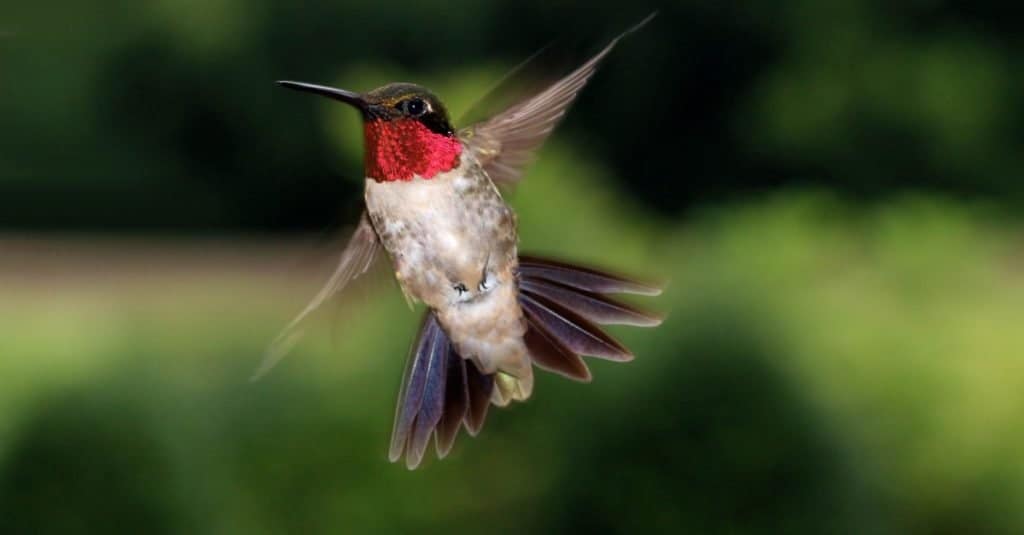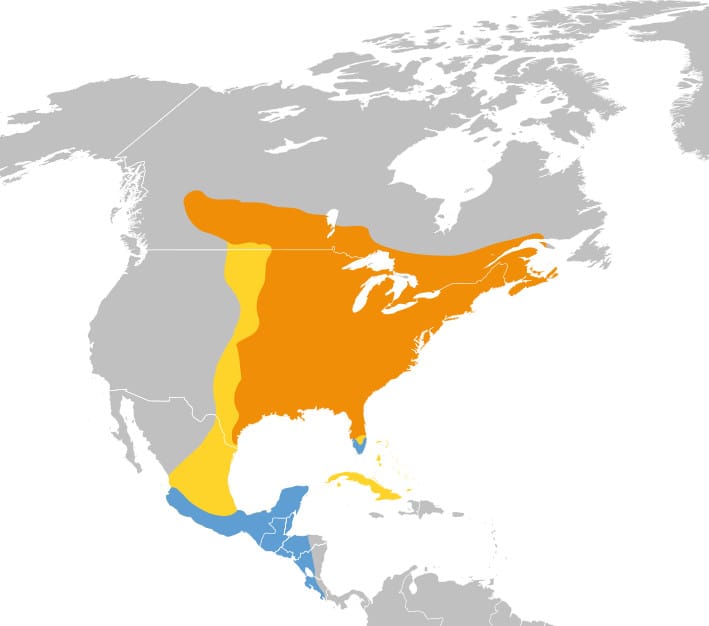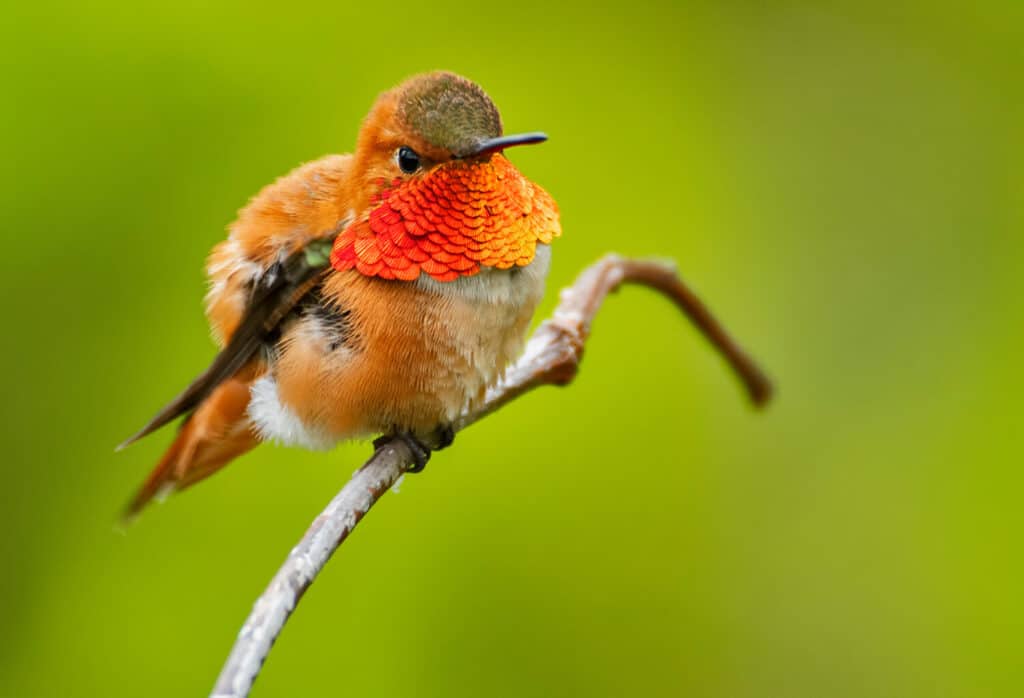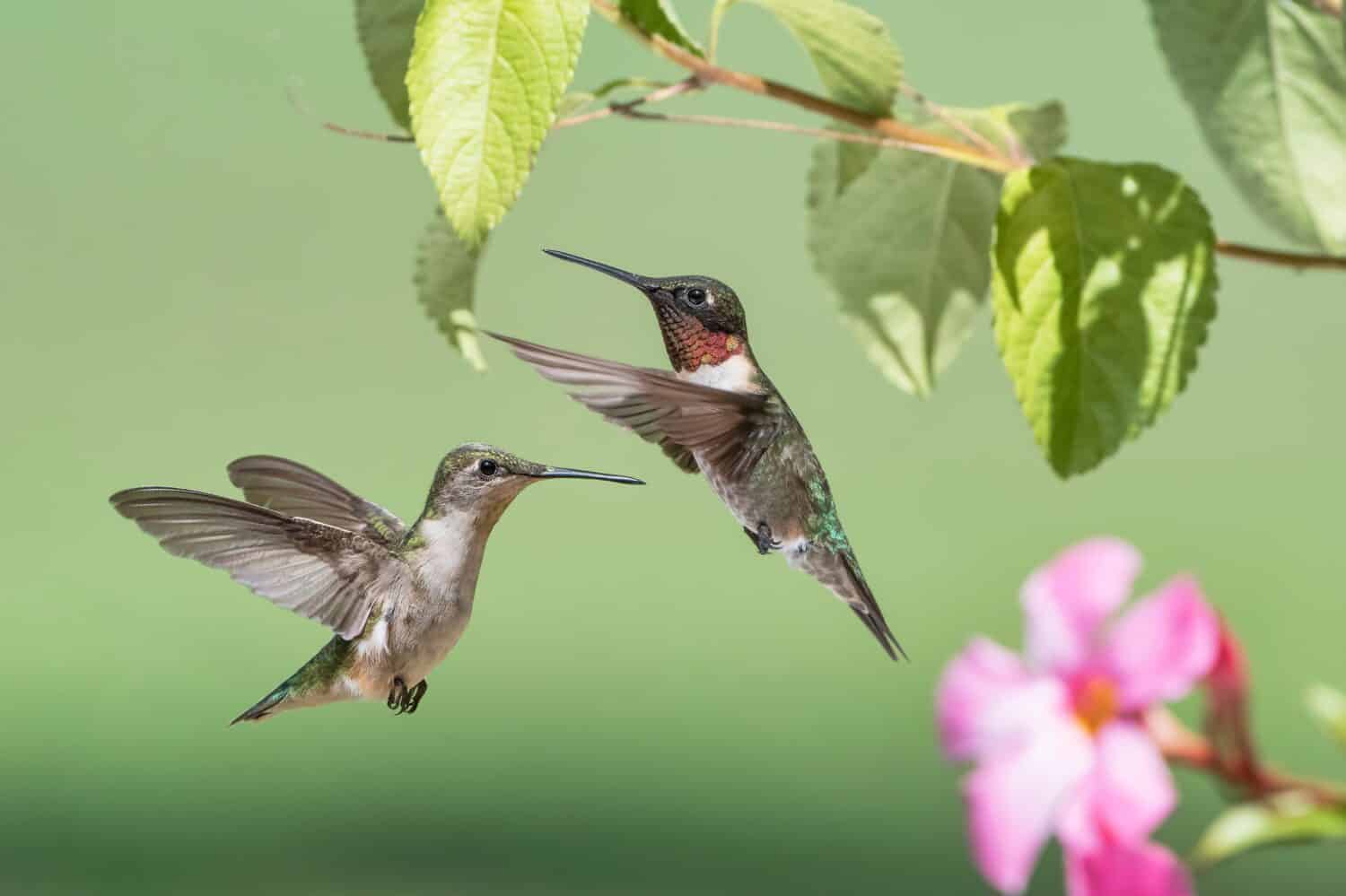Did you know Connecticut only has one truly native hummingbird species? That’s right, only the ruby-throated hummingbird (Archilochus colubris) calls Connecticut part of its home turf. In fact, this is the only hummingbird species native to the whole of the Mid-Atlantic and Northeastern U.S. and Canada! Like other hummingbird species, they are strongly dimorphic, with males sporting more colorful plumage that includes an iridescent red throat patch called a gorget. Read on to find out when these little flying jewels arrive in and leave the state, where they go, and what other species may stop by from time to time for a visit.
When Do Ruby-Throated Hummingbirds Arrive in Connecticut?

Putting up a hummingbird feeder during spring migration season is a great way to coax ruby-throated hummingbirds to stay in Connecticut and breed!
©Christine Balleau/iStock via Getty Images
Ruby-throated hummingbirds are not year-round residents of Connecticut. Rather, they arrive during the annual spring migration season. Many will just be passing through as they migrate as far north as southern Canada. However, others will stick around and make Connecticut their home for the breeding season. The males usually arrive first to claim breeding territories, beginning around the end of April. The females will then arrive in May to choose mates and nest. If you want to entice these migrating hummingbirds into making your home theirs for the season, you can attract them by planting their favorite nectar flowers and putting up hummingbird nectar feeders!
When Do Ruby-Throated Hummingbirds Leave Connecticut?

Just as the adult males are usually first to arrive in spring, they are often the first to leave in fall.
©Ramona Edwards/Shutterstock.com
After breeding and raising their young through the summer, ruby-throated hummingbirds will reverse their path during the autumn migration season. During this time, the birds who stayed to breed (and their young!) will join up with others flying back down from more northern territories. The departing waves usually start traveling through Connecticut in late August to early September, with most birds gone from the state by early October.
Where Do Ruby-Throated Hummingbirds Go After Leaving Connecticut?

This map illustrates the range of the
ruby-throated hummingbird
. Orange represents its breeding range, yellow its extended migration range, and blue its overwintering range.
Ruby-throated hummingbirds migrate south to overwintering grounds in Florida, Mexico, and Central America. Astoundingly, many will cross the Gulf of Mexico in a single super-powered nonstop flight!
Do Other Hummingbirds Visit Connecticut Too?
While the ruby-throated hummingbird is the only official native species in the Northeastern U.S., several other species from western and southern North America and Central America occasionally pop up in the region as “vagrants.” These are individuals from species whose natural ranges aren’t normally in the area, but who somehow turn up anyway. They may have been blown in by storms, gotten thrown off course during migration, hitchhiked on vehicles or cargo, or otherwise just managed to break new ground for their species! At least four such vagrant species have been recorded in Connecticut in recent decades.
1. Rufous Hummingbird (Selasphorus rufus)

The male rufous hummingbird distinguishes itself from the ruby-throated hummingbird by its brilliant orange coloration.
©punkbirdr/Shutterstock.com
While this hummingbird species is native to western North America, it appears as a vagrant east of the Rockies more frequently than any of the other western species. It is most likely to turn up as a special visitor to Connecticut from autumn migration season into early winter.
2. Calliope Hummingbird (Selasphorus calliope)

The male calliope hummingbird has a magenta-rayed gorget.
©iStock.com/McBenjamen
This is the smallest bird in the United States and a rare western species visitor to Connecticut. It has been recorded at least five times in the state, most recently in October 2020.
3. Black-Chinned Hummingbird (Archilochus alexandri)

The male “black-chinned” hummingbird sports a beautiful deep purple gorget too.
©rck_953/Shutterstock.com
This rare western species visitor has only been recorded twice in Connecticut, once in the autumn of 2013 and again in the autumn of 2022.
4. Broad-billed Hummingbird (Cynanthus latirostris)

This male broad-billed hummingbird is showing off its distinctive red bill and metallic blue-green iridescence.
©Monir Hossain/iStock via Getty Images
This species, native to Mexico and the Southwestern U.S., is an exceptionally rare visitor to Connecticut. It has only ever been recorded once in the state, back in August 2008.
Conclusion
The ruby-throated hummingbird is Connecticut’s only native hummingbird species. This migratory species will first arrive in the state during the spring, usually around the end of April into May. After spending the spring and summer months breeding and raising families, they will leave again for autumn migration in late August through September, making their way south to their overwintering grounds. There are also at least four other hummingbird species that, while not native to the state, have been recorded as rare visitors. If you want to make whatever hummingbirds show up in your area feel welcome, make sure to provide them with a hummingbird-friendly habitat!
Thank you for reading! Have some feedback for us? Contact the AZ Animals editorial team.








